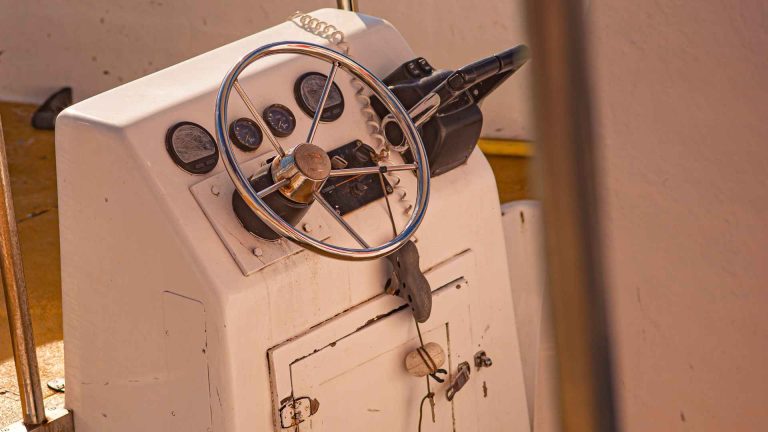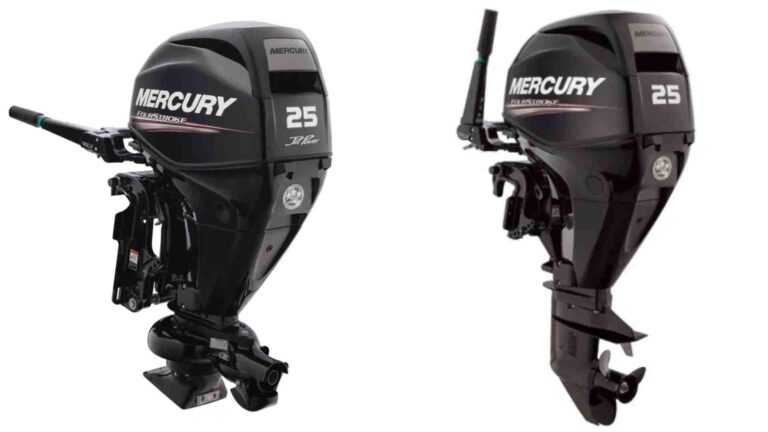How to Calculate a Boat’s Propeller Pitch & Why It Matters
When it comes to boating, understanding the mechanics behind your vessel can make a significant difference in its performance, efficiency, and fuel consumption. One of the most crucial components to get right is the boat’s propeller pitch. While the term “propeller pitch” might sound technical, it’s essential knowledge for anyone aiming to maximize their boat’s potential, whether you’re a casual weekend cruiser or a serious angler.
This article will break down what propeller pitch is, how to calculate it, and why it matters for your boat’s overall performance.
What is Propeller Pitch?
The propeller pitch refers to the distance a propeller would theoretically move forward in one full rotation through a solid substance, like a screw turning through wood. For example, a propeller with a pitch of 10 inches moves forward 10 inches with each full revolution, assuming no slip (inefficiency). In reality, factors like water resistance cause the propeller to move slightly less than the pitch in actual conditions.
Propeller pitch is typically measured in inches and is one of two key factors that determine how a propeller interacts with water. The other is the diameter, which is the width of the circular area the propeller blades cover as they rotate.
Why Does Propeller Pitch Matter?
Choosing the right propeller pitch is crucial because it directly impacts how your boat performs in various situations. Here’s why it matters:
- Boat Speed: A higher pitch propeller (greater distance per rotation) generally increases top speed but requires more engine power. If the engine can’t handle the load, the boat may struggle to get on plane or may overwork the engine.
- Acceleration: Lower pitch propellers provide better acceleration (more thrust), which is ideal for activities like waterskiing or towing because they reduce the load on the engine.
- Fuel Efficiency: The wrong pitch can lead to poor fuel efficiency, either by over-revving the engine or by underutilizing its power. For cruising and fishing, you want a balance of speed and fuel efficiency.
- Engine Health: Using the wrong pitch can overwork your engine, causing it to operate outside its optimal RPM range, which could lead to mechanical issues over time.
In short, the propeller pitch affects how fast your boat can go, how quickly it accelerates, and how hard your engine has to work.
How to Calculate Propeller Pitch
Step 1: Understand Your Boat’s Specifications
Before choosing or calculating propeller pitch, you need to know key specifications about your boat and engine:
- Engine RPM range: The manufacturer specifies the optimal operating RPM range for your boat’s engine. Running the engine outside this range can lead to performance and longevity issues.
- Boat’s maximum speed: Your desired maximum speed (top-end performance) will guide whether you need a high or low-pitch propeller.
- Propeller diameter: Typically, this is paired with the pitch, and they work together to influence overall performance.
Step 2: Measure Current Propeller Performance
To calculate or refine the ideal propeller pitch for your boat, begin by assessing how your current propeller performs. Use a GPS to measure the boat’s speed and note the engine RPM at wide-open throttle (WOT). Compare this data to the manufacturer’s recommended RPM range.
For example, if your boat’s engine has a WOT range of 5000-5800 RPM, and you’re hitting 6200 RPM, it means your current propeller pitch is too low, causing the engine to over-rev. Conversely, if the RPM is too low, it means the propeller pitch is too high, and the engine is underperforming.
Step 3: Adjust the Propeller Pitch
Here’s a rough guideline: for every 1-inch change in propeller pitch, the engine’s RPM will change by about 150-200 RPM. If your engine is over-revving, you can increase the propeller pitch to lower RPMs. If the engine is under-revving, a lower pitch will increase RPMs.
For instance, if you’re 300 RPM over the manufacturer’s recommended maximum, you’ll want to increase the pitch by roughly 2 inches.
Step 4: Calculate Slip
Propeller slip is the difference between the theoretical distance the propeller moves (based on pitch) and the actual distance it moves through water. To calculate it:
- Multiply engine RPM by the pitch (in inches), then divide by 1056. This gives the theoretical speed in miles per hour.
- Use a GPS to record your actual speed.
- Use the formula:
Slip (%) = [(Theoretical Speed - Actual Speed) / Theoretical Speed] × 100A lower slip percentage means more efficient performance.
Example Calculation:
- Engine RPM: 5000
- Propeller pitch: 12 inches
- Actual GPS speed: 35 mph
Theoretical speed:
5000 × 12 / 1056 = 56.82 mphSlip:
(56.82 - 35) / 56.82 × 100 = 38.4%In this case, you have a slip of 38.4%, which could indicate room for improvement in efficiency, perhaps through a pitch adjustment.
Popular Propeller Pitch Sizes & Pricing
Propellers come in a variety of pitches, typically ranging from 9 to 27 inches. For a casual boater with a small to medium-sized engine, pitches of 10-17 inches are common, whereas high-performance or racing boats might use a pitch of 21-27 inches. Below are a few examples of propeller pitches and prices:
1. Solas Amita 3 Aluminum Propeller 13.25 x 17
- Pitch: 17 inches
- Price: $120-$150
- Specs: Suitable for outboards up to 150 hp; known for good acceleration and mid-range speed.
2. Mercury Black Max 14 x 13
- Pitch: 13 inches
- Price: $110-$140
- Specs: Ideal for smaller boats or pontoons; provides good control at lower speeds.
3. PowerTech Stainless Steel 15 x 21
- Pitch: 21 inches
- Price: $400-$500
- Specs: Designed for high-performance applications, suitable for fast boats that need higher top-end speed.
Final Thoughts
Choosing the right propeller pitch is a balance between engine performance, boat speed, and fuel efficiency. Whether you want maximum speed, efficient cruising, or quick acceleration, understanding and calculating your boat’s propeller pitch is key to getting the most out of your boat. If you’re unsure, consult your boat manufacturer or a professional for personalized recommendations.
Investing in the right propeller now can save you from future mechanical problems and optimize your time on the water!
Happy Boating!
Share How to Calculate a Boat’s Propeller Pitch & Why It Matters with your friends and leave a comment below with your thoughts.
Read How to Trim a Boat: Trimming Your Boat in 5 Simple Steps until we meet in the next article.






